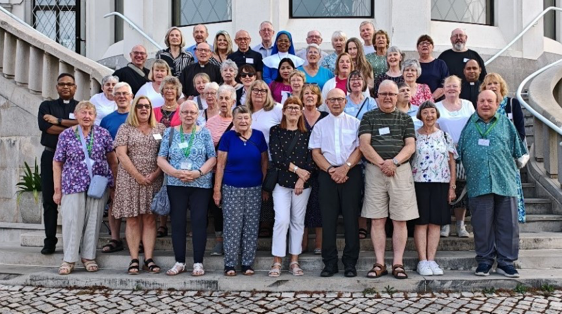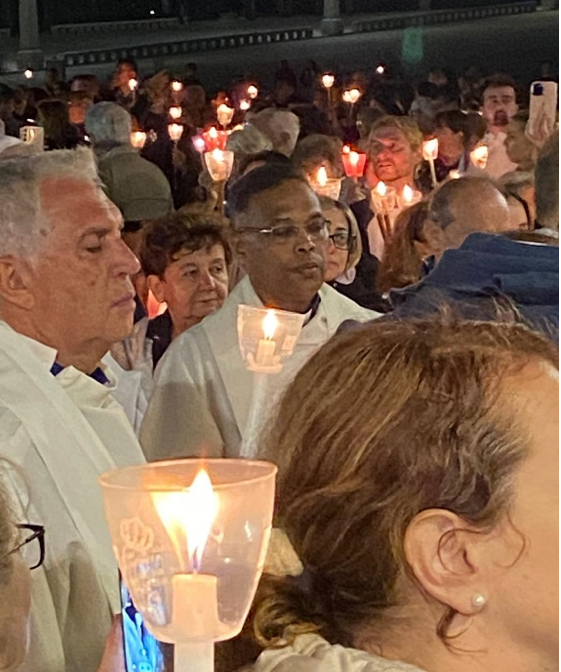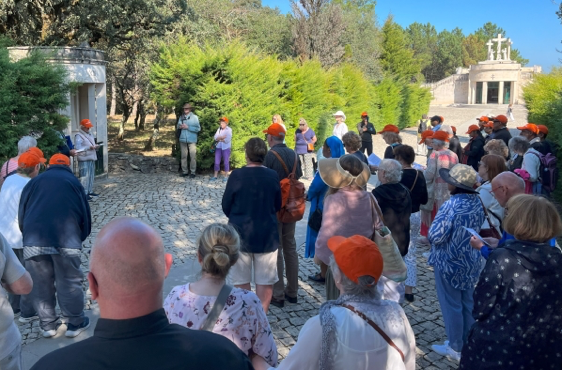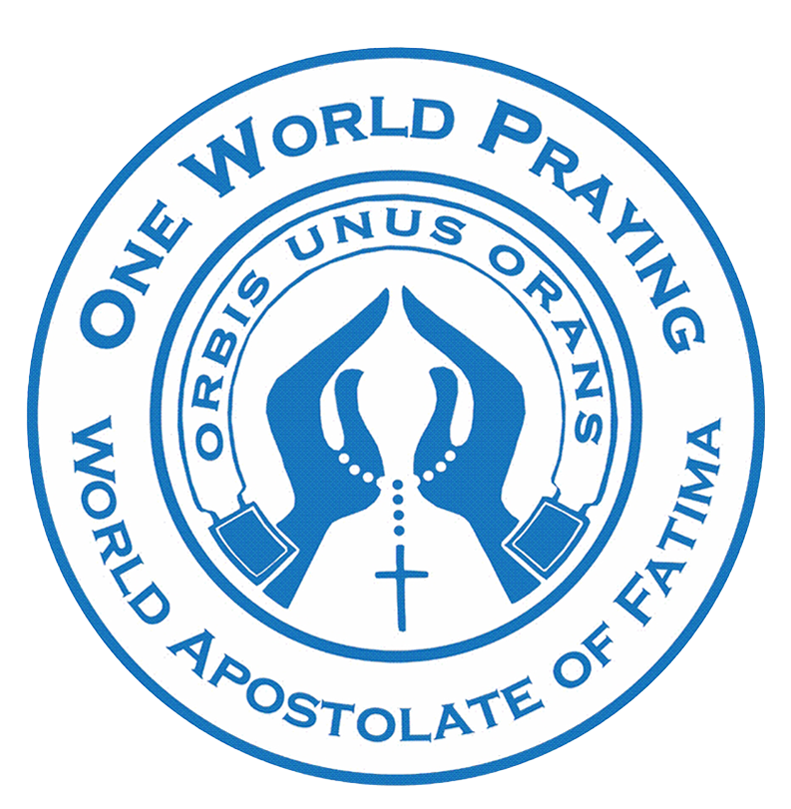THE FINAL BATTLE: Why the Message of Fatima is a Survival Guide for the Modern Family?
Northern Dioceses Fatima Pilgrimage, 19-26 September 2024 - Part 1 By Pilgrimage organiser Patrick Cunningham
Over recent years the World Apostolate of Fatima has visited a number of Churches in the Northern dioceses of England and Wales (WAF-E&W), primarily to promote awareness of the events that took place in Fatima, Portugal, over 100 years ago, and also to encourage devotion to our Holy Mother who constantly intercedes for all Humanity.
Due to this increased awareness WAF-E&W arranged a pilgrimage to Fatima for pilgrims from the Northern Dioceses, with the help and support of Canon Stephen Watson from St Pauls, Alnwick, Fr Manoj Punchakunnel from St Pauls, Cramlington, Fr Saji Thottathil from St Matthews, Jarrow, and Fr Bill Serplus from St Aelred’s at York.
Forty-eight pilgrims inclusive of the four parish priests, plus Deacon Rob Wareing from St Pauls, Cramlington and Sister Bridget Okoye from the Daughters of Divine Love Congregation, Birmingham, joined the pilgrimage which took place between 19th to 26th September 2024.
Pilgrims travelled by coach to Manchester Airport, to board the flight to Lisbon, Portugal, and then finally via coach transfer to Domus Pacis Hotel in Fatima.
The Hotel was initially funded by the founding members of the Blue Army (now known as the World Apostolate of Fatima) to provide accommodation for pilgrims from all over the world. Apart from its many rooms and dining facilities, it also has a large conference room, a chapel at ground floor level, and a Byzantine chapel above. We arrived in the early hours of Friday morning, and all went to their rooms to catch up on sleep.
The pilgrimage began with a talk by Mr. Nuno Prazeres and Mrs. Ana Reis, from the WAF-International Secretariat. Fatima is probably the most prophetic apparition the world has witnessed and came at a time when the world was turning away from God. Our Lady came with a message to restore the centrality of God in people’s lives and with a message of hope to bring peace back to the world. We may well ask what have we learnt and what have we done since then.
This is why prayer is so important. Praying the rosary will bring peace to the world.
The talk was especially interesting given that Nuno and Ana related personal stories about the events in Fatima during the apparitions from the eyewitness accounts of their respective grandparents.
Nuno told a story from his grandfather who had known Francisco. One day his grandfather was playing Hide and Seek with Francisco and some other boys.
Everyone had been found except Francisco, so all the boys started to look for him and eventually they found Francisco on a tree praying the rosary. He had simply forgotten they were playing a game and prayed the rosary. For Francisco God was the centre of his life, and the meaning of his life was to pray.


Ana recalled that her grandmother was about 2 years old at the time of the apparitions. The people of the village were mainly farmers and shepherds, and often quite poor, and so handed down clothes. When her grandmother turned 6-7 years old, she was given a blouse to wear by Jacinta Marto’s mother, Olympia, and she was told that now she was wearing the blouse of Jacinta she now has to be as good as Jacinta was!
Her grandmother lived a long life and died a few years ago at the age of 97. She would pray the Rosary every day of her life and follow the requests of Our Lady of Fatima.
Later, that day we had a tour of the shrine which lies over the apparition site of the Cova da Iria, at Fatima. The Shrine has two Basilicas, one at either end of the sanctuary area. The Basilica of the Holy Rosary was begun in 1928 (11 years after the apparitions of Our Lady in 1917) and was consecrated on 7th October 1953. It has 15 altars and is dedicated to Our Lady of the Rosary.
The painting above the high altar depicts the message of Our Lady to the little shepherds (Lucia, Francisco, and Jacinta), prepared by the Angel of Portugal through their encounter with Christ in the Eucharist. The tombs of Saints Francisco and Jacinta lie on either side of the high altar, and Blessed Lucia lies next to Jacinta’s tomb.
The Basilica of the Most Holy Trinity, dedicated on October 12, 2007, has a seating capacity of 8,633. A smaller chapel, the Capelinha, was built at the apparition site and is the heart of the sanctuary. The marble pillar on which the statue of Our Lady rests is the exact spot where she appeared. Four million people visit the sanctuary each year.
The pilgrimage itinerary for the week included daily Mass and visits to sites of interest as well as free time to explore the shrine’s many chapels, including those for perpetual Adoration and Reconciliation. Masses were held each day, most of which were presided over by the priests and deacon from our pilgrimage group. This included a Mass at the Chapel of the Angel of Peace at the shrine, Mass at St Anthony’s, the local Fatima church where the seers went to Mass and to pray, and the church at Santarem (This visit included veneration of the Eucharistic bleeding Host).
A Rosary and candlelight procession was held each night at the Chapel of Apparitions; this was a very moving experience and well worth attending. Every Sunday, the Sanctuary holds a morning international Rosary, followed by an international Mass. Thousands of people were in attendance as the Statue of Our Lady of Fatima was processed to the outdoor altar.
On the Sunday we were in attendance there was a special blessing of helmets for motorcyclists. The event is held annually, drawing many thousands of motorcyclists from across the region. The blessing added to the atmosphere at the shrine showing reverence in a spiritual gathering and fostering community support by raising funds for the purchase of an adapted wheelchair for a 23-year-old resident of Peniche who became a paraplegic after a motorcycle accident in 2021.
The second part of this account will continue next month


